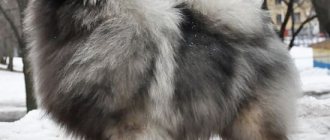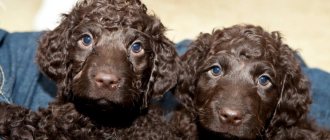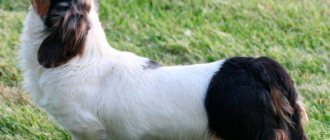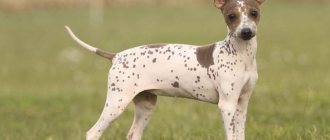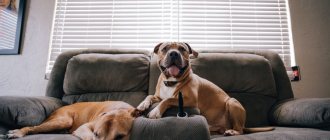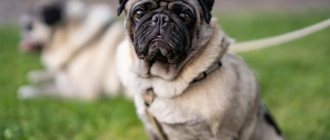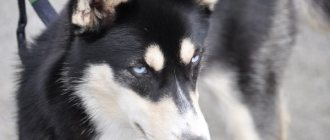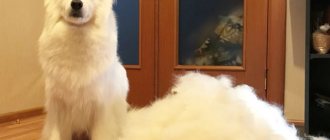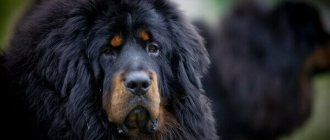A dog is considered man's best friend, but man, in truth, is not always a dog's best friend when it comes to putting his interests first in the breeding process. This article provides some, it must be said, interesting but outrageous examples of breeding that may have gone too far: from facial deformities that were considered desirable to the random doubling of cancer susceptibility rates. Worst of all, unhealthy breed standards can mean huge vet bills.
English bulldog
Iconic, but considered an example of selective breeding taken to extremes, English Bulldogs face a host of health problems resulting from their involvement in bull baiting and, later, much greater breeding for show.
Considered to be the most disease-prone dog among dogs, English Bulldogs have flattened heads, health problems of all kinds, and an average lifespan of 8 years, compared to the average dog lifespan of 13 years.
The ancestor of the English Bulldog was not the pig-like caricature of a dog as it is now. In the 1800s, the ancestors of modern English Bulldogs, Old English Bulldogs, were ferocious, lanky animals that may have resembled modern dogs colloquially called pit bulls, but were more violent.
These bulldogs were used in immoral bull baiting, which was banned in the UK in 1935 under the Cruelty to Animals Act. Bulldogs would clamp their jaws on the bulls' faces, often on the noses or eyes, in an attempt to hold them tightly, causing further pain and injury.
While the modern English Bulldog is considered a mascot and symbol of British determination, multiple problems lie beneath the surface. As the breed is bred, aggression disappears and, despite their attractiveness, modern bulldogs have all sorts of problems with the respiratory system, are prone to exhaustion, exhaustion, heat stroke, have problems with teeth and begin to age as early as 5-6 years.
Greyhounds
They belong to the group of hunting dogs. They do not hunt with the help of scent, but observe and drive. Fast, agile and resilient. They are not well suited for apartment living, as they value freedom. Although, with proper upbringing, they learn to take up a little space and be quiet.
Afghan
Photo from Wikipedia website
The Afghan Hound is a tall and slender hunting dog with long, silky hair that protects well from the cold of the mountains. According to legend, she was among the animals that Noah saved during the Flood. In Europe, the breed was recognized only in the 1920s.
Difficult to train. Loving, playful disposition. Always happy for a person's company and needs attention. He gets along well with children, but sudden sounds and movements from them can frighten the dog. Makes friends with other animals if he knows that this is not prey. Otherwise, it will chase and try to catch.
Azawakh
Photo from Wikipedia website
An African hound that accompanied the nomads of the Sahara for a long time. For them, the Azawakh is a guard, a hunter and proof of their status.
The physique is dry, the muscles are flat - Azawakhs are ideally suited for the desert. He is tall and his limbs are long. The coat is short and thin. The color can be any.
Azawakhs are loyal to only one person, although they do not show their emotions. Ready to protect the territory to the last. They treat strangers with suspicion and do not make contact. Calm disposition, not playful.
Greek Greyhound
An ancient breed that was brought to Greece by the Phoenicians. It is practically not found outside the country.
The Greek Greyhound has an athletic build and strong paws. Strong jaws allow them to hold prey for a long time. The wool is hard and rough. Color: black with tan.
During a hunt, Greeks can be bloodthirsty, but in normal times they are devoid of aggression and love to have fun with people. They are well trained and enjoy following commands.
Sluggi
Photo from Instagram account annarella_szabo
One of the rarest and most ancient breeds. Known in the countries of North Africa, where residents, with the help of servants, hunted hares, wild boars, and gazelles. They were so highly valued that they were warmed with blankets and given the best pieces of meat.
Sluggs have long legs and well-developed muscles, but a graceful build. Their movements resemble those of cheetahs. There is practically no wool. The color is light, occasionally there is a black mask.
Servants are gentle and loyal with their masters; they are distrustful of strangers. They are hardy and adaptable, but love comfort and even luxury. Independence is felt in the character, commands are executed according to the mood.
Saluki
Photo from Wikipedia website
One of the oldest breeds. Designed for hunting small game and gazelles. The Arabs highly valued the Saluki for its strength, endurance and beauty. They were treated like family members.
The dog's character is calm and silent. They are independent and never seek human attention. Affectionate with people and even children. They treat outsiders with distrust.
Saluki is large but graceful. The hair on the body is short, but longer on the ears. Depending on the region, they can be taller and overgrown or short and thin.
German Shepherd
The breed, renowned for its service in the police, military, security guards and as guides, is also increasingly prone to serious disabilities.
Their low, sloping back, large size, and passion for vigorous physical activity make them susceptible to serious complications. This dramatic result of what was an overall fine dog can be attributed to extreme aesthetic and utilitarian preferences - rather than a focus on health - throughout the breed's development.
German Shepherds used to be a slimmer, more canine and athletic breed bred for service. Over time, show standards created pressure for dogs to have a heavier build, with an extremely sloping back being a trait considered desirable for the further development of the breed.
With their great popularity came great costs in the form of sky-high levels of vulnerability to obesity and musculoskeletal diseases, especially the notorious hip dysplasia, arthritis and inappropriate aggression. German Shepherds have acquired an abnormally expanded shape and become larger. These results were published in the journal Canine Genetics and Epidemiology.
Dachshund
What happens if you build a bridge that is longer than its strength allows? Such a bridge can collapse, and the dachshund's musculoskeletal system presents exactly this problem.
Originally bred to hunt small, often burrowing prey, dachshunds, whose name means "badger dog" in German, are highly prone to serious back problems given their long build coupled with very short limbs. Colloquially known as sausage dogs, they often suffer from a terrible condition known as intervertebral disc disease.
The Dachshund is a breed that is so prone to spinal problems that 25% of Dachshunds born later become victims of devastating spinal diseases. Ruptured discs, prolapsed discs, herniated discs, protruding discs, and slipped discs are just some of the types of disc damage that occur in Dachshunds. Results? Catastrophic! The result is pressure on the spinal cord, leading to pain, associated permanent injury and paralysis. Surgery may help, but often the end result of intervertebral disc disease in most affected dachshunds is euthanasia.
Catalburun or Turkish Pointer
A very unusual breed. Its representatives are distinguished by a characteristic forked nose. Catalburuns are bred mainly in Turkey; in other countries this breed is little known.
The Turkish pointer dates back to the times of the Ottoman Empire, where they were used to hunt partridges. Dogs have an obedient and calm disposition.
In total, there are about two hundred Katalburuns in Turkey.
Golden retriever
There are few dog breeds that are as loved and known as Golden Retrievers. They are tough, fun-loving, adventurous and extremely loving and friendly. Trusted by their parents as reliable babysitters and rarely involved in biting, Golden Retrievers have a lot going for them.
Originally bred for practical purposes, this breed originated in Scotland in the 1800s as an obedient and loyal hunting dog, having no problem jumping into the water to retrieve and retrieve a dead duck, as well as fetching upland game birds. Since then the breed has been divided into British, American and Canadian subtypes.
The problem is that 61% of golden retrievers die from cancer. This is twice the average for the dog breed. Golden Retrievers die from cancer more often than from any other cause, with hemangiosarcoma being their most common type of cancer (the next most common types are lymphosarcoma, mast cell sarcoma, and osteosarcoma).
Hip and elbow dysplasia is also quite common among dogs of this breed. Additional problems can be created by various atrophies associated with eye diseases, cataracts, and a tendency to develop heart diseases in the form of subvalvular aortic stenosis.
New in blogs
Previously, dogs were needed to earn money for a living, but today these animals have turned into fat, lazy balls of hair that do nothing but eat and lie on the sofa all day. For centuries, the dog was more of a laborer than a "man's best friend." Family dogs were valued far more for their ability to perform complex (and sometimes deadly) tasks than for their ability to snuggle up on a pillow.
It turns out that we don’t know a lot about our smaller brothers. For example, why do dachshunds have such shaped ears? Or why do Shar-Peis have wrinkled skin? These are not characteristics of the breed, but unusual superpowers that allow dogs to better fulfill all human requirements.
6. Dachshunds were bred to kill badgers.
Dachshunds are the ninth most popular dog breed in the United States (previously, they were highly prejudiced against, dating back to World War I, due to the fact that they were once the favorite of Kaiser Wilhelm II). Most people do not take this breed seriously, jokingly calling it a “sausage with legs.”
Believe it or not, such a wonderful appearance of the dachshund was conceived for a reason. Their long body, deep, voluminous chest, pointed muzzle and short, strong legs, combined with an aggressive nature, are all ideal for the purpose for which they were bred: hunting badgers.
The homeland of dachshunds is Germany. In German the word "dachshund" sounds like dachshund. “Dachs” translated from the language means “badger”, hence the name “badger dog”. The cylindrical body and large paws allow dachshunds to dig and move through underground tunnels, and their wide chest allows them to breathe better underground. What is important, these features of the appearance of dachshunds are also simply vital when the dog comes face to face at the end of the mentioned tunnel with its growling, furry opponent.
Have you not yet developed a liking and respect for this breed of dog? Then here are some more facts for you. A dachshund saved the family of famous American actor John Wayne from death in a fire. These dogs were bred by Field Marshal Erwin Rommel himself. Picasso's muse was a dachshund named Lump.
Is this not enough? Then watch the video of how a dachshund deals with a field rat:
https://www.youtube.com/v/EadYOb-JO-E?version=3&hl=ru_RU&rel=0″ type=”application/x-shockwave-flash”> https://www.youtube.com/v/ EadYOb-JO-E?version=3&hl=ru_RU&rel=0″/>
5. The Catahoula Leopard Dog Can Climb Tall Trees
The Catahoula Leopard Dog looks like something out of the ordinary, because that's exactly what it is. In fact, the origins of this breed are as murky as the water in a swamp. Some say that French settlers crossed their working dogs with red wolves. Others claim that local Native Americans developed the breed by crossing dogs they bred with Hernando de Soto's working dogs about 300 years ago. Whatever their origin, leopard dogs are simply amazing. Why? They can climb trees.
This skill is not actually the result of creative breeders; it arose naturally. In ancient times, there was always a shortage of food, and therefore dogs were often left to fend for themselves. Out of necessity, these dogs developed not only the aforementioned skill of tree climbing, but also the ability to swim well, due to the presence of webs between their toes, and an extremely high level of intelligence.
Thanks to the unique talents and efforts of its owners, the Catahoula Leopard Dog is now a purebred dog breed. Leopard dogs are considered one of the best “hunters” of wild boar. Theodore Roosevelt himself hunted with them.
And here is a video demonstrating the unique ability of dogs of this breed:
https://www.youtube.com/v/dadV4DCO_0g?hl=ru_RU&version=3&rel=0″ type=”application/x-shockwave-flash”> https://www.youtube.com/v/dadV4DCO_0g?hl= ru_RU&version=3&rel=0″/>
4. Shar Peis were bred to hunt wild boar.
Let's be clear: Chinese dog breeds can be quite strange sometimes. This list includes the shaggy purple-tongued Chow Chow, the flat-faced Pekingese, and the Chinese Crested, which is considered the ugliest dog in the world. Well, what about Shar-Peis? Shar Peis are a special breed because they were bred specifically to hunt wild boar. Using the power of your saggy folded skin.
The problem is that wild boars are huge, angry wild beasts with bulletproof skin, and Shar-Peis aren't that big. On average, their height reaches 45-50 cm, and their weight ranges from 20 to 27 kg. Boars, in comparison, look like huge tanks. To overcome this problem, Chinese breeders endowed this breed with an excessive number of skin folds, thanks to which the Shar Pei could easily escape from a wild animal, because it was impossible to grab it by the skin. He dodged and fought back. So, in fact, the folds of the Shar Pei are a means of protection.
Later, the ancient Chinese who lived in the countryside became bored, and they decided to organize dog fights with the participation of representatives of this breed. But the reason why people breed Shar-Peis today is because these animals are very kind, loving and friendly by nature.
3. Dalmatians - firefighter mascot
And although many probably still think that Dalmatians were invented by Walt Disney, the birthplace of this ancient breed is considered to be Croatia, where they were mainly used to accompany carriages and stagecoaches. And all because they get along well with horses. Moreover, Dalmatians are absolutely not afraid of fire.
In the days when fires were fought by men on flammable wooden carts, someone realized that Dalmatians could be used to run ahead of the carriage and clear the way to the scene. These dogs even calmed horses, which are known to be very afraid of fire, and also guarded the belongings of firefighters (since thieves never sleep). After the invention of cars, everything changed, but Dalmatians, as before, continue to accompany fire engines today.
2. Basset Hounds have large ears that help them detect odors.
Dogs of the Basset Hound breed are not particularly beautiful: they are clumsy, long and, moreover, tend to drool like St. Bernards. They were bred to hunt hares, which sounds rather ridiculous considering the Basset Hound's body structure and the speed at which hares move. In addition, the weight of males of this breed can reach more than thirty kilograms.
But in fact, basset hounds are ideal for hunting hares. Firstly, they, like all dogs, have an incredible sense of smell. The long, large ears, although prone to rot (Basset Hounds are prone to yeast infections, which should not be taken lightly), can pick up prey scent from the ground and hold it close to the dog's nose. And the skin hanging from her head? The same. If a basset hound catches the scent of an animal with its super ears and turbo scent, it will persistently try to track it down. The incredible endurance of these dogs, combined with the inability to move quickly (due to their short legs), allows hunters to keep up with them, and when the target is discovered, it all depends only on the skill and dexterity of the hunter.
1. Rhodesian Ridgebacks literally hunted lions
At a time when Zimbabwe was still called Rhodesia, European colonists in Africa encountered wondrous and dangerous animals that they had never seen before. Naturally, they immediately wanted to hunt them, but the dogs they took with them were capable of chasing foxes and deer, but not such huge prey. And then the Europeans decided to crossbreed various dogs with the semi-wild Khoikhoi dogs, which were kept by the local Hottentots. The result was the Rhodesian Ridgeback, also known as the African Lion Dog.
And as you probably already understood, these dogs were used to hunt lions. No, they did not sniff the trail and did not follow them along it, but simply drove the great animals and waited for their owners to gallop in and deal with them.
Ridgebacks are immune to insect bites and are very hardy (they are able to move over distances of up to 50 km). They make not only good hunters of African lions, but also excellent pets. However, it is worth remembering that dogs of this breed are very active, and if they are not trained, they can turn your house upside down.
Copyright Muz4in.Net © Translation of an article from cracked.com Translator ROSEMARINA
Cavalier King Charles Spaniel
Although elegant and poised, the royally named Cavalier King Charles Spaniels face a terribly awkward physiological problem. These dogs are classified as "toy" dogs, but their brains are huge, approaching the size of a large dog such as a retriever. Simply put, their skulls are not big enough for their large brains.
At the same time, due to insufficient upper spinal space, they suffer spinal cord damage. Known as a Chiari-like malformation, this deformity of the spine and skull, exacerbated by the development of a short-skull, short-nosed body type since the late 1600s, contributes significantly to the development of syringomyelia, which is unusually common among Cavalier King Charles Spaniels.
Typically rare conditions among dogs, Chiari-like malformation and syringomyelia occur in unusual numbers in these spaniels. Chiari-like malformation affects an astonishing 95%, and syringomyelia affects almost 50% of Cavalier King Charles Spaniels.
Rhodesian Ridgeback
The Rhodesian Ridgeback is a large breed, and its representatives look quite intimidating. Dogs grow to almost 70 cm at the withers. They have an independent nature, but rarely show aggression towards people or other animals. Ridgebacks were bred in South Africa. These dogs protected local residents from lions and baboons. Ridgebacks are affectionate animals. They have well-developed willpower and prey drive. Be prepared for the fact that you will have to train such a pet almost every day.
Pug
The tiny mastiff-like dog faces many medical problems from an early age. A truly nasty breed-specific disease known as Pug Dog Encephalitis affects this wrinkly-faced toy.
This disease, otherwise called necrotizing meningoencephalitis, is nothing more than a genetic disorder of the brain. The fatal disease attacks the central nervous system with intense inflammatory effects. Less serious, but still worthy of attention, is the tendency of the pug's wrinkled face to become inflamed due to the accumulation of dirt and to dermatitis.
An absurd problem that poses a danger to Pugs is the ability of their eyes to bulge and eventually pop out of their sockets from even seemingly minor head impacts as a result of over-exertion or conflict with other dogs. If all this wasn't enough, Pugs are prone to luxating patellas, keratoconjunctivitis sicca, congenital hypoplasia of half a vertebra, and hip dysplasia.
Despite their defects and problems, pugs cope with it. These small descendants of mastiffs, first recorded in China, are the most powerfully built "toy" dogs and can live up to 15 years. Such is the life of a pug.
The youngest dog breeds
Most young dog breeds have not received international recognition and, let's be honest, never will. However, the demand for the fruits of experimental cynology remains high.
Large breeds
Most often, the purpose of breeding new large dogs is to improve their working qualities or to obtain a certain specialization. In this case, the main breeding material is the gene pool of the German Shepherd - it is no coincidence that it is considered an ideal service breed.
Utonagan
Utonagan is a dog of impressive size and stern appearance; it resembles a wolf more than any of the three progenitors of the new breed: husky, malamute and “German”. This dog is better trained than its northern ancestors and has better endurance than the German Shepherd.
Utonagan - three in one: Siberian Husky, Alaskan Malamute and German Shepherd
Jackal dog
The experiment was based on a professional order from the customs service of Aeroflot and military aviation. A serious and hardy, well-trained dog with excellent scent was required to search for weapons and explosives hidden in cargo. Mixed breeds of different breeds showed good results in this field, but the best was the hybrid of the Siberian husky and the Caucasian jackal - and that’s how the jackal dog appeared.
To obtain a jackal dog, a Caucasian jackal and a Siberian husky were crossed, which have an amazing sense of smell and excellent endurance.
Chow-chow
Bright appearance is not the only advantage of this fiery red dog. Chow Chow is the international love child of a Chinese Chow Chow and a German Shepherd; from them she inherited Eastern sense of purpose and Western rationalism.
Chow-chow: the “authors” of this miracle are the chow-chow and the German shepherd
Buldarka
Yes, she is not a beauty, but both the German Shepherd and the English Bulldog, from which this dog originated, can envy the Bulldarka’s service qualities. Powerful, fearless, with great talent for training - such a dog will not be left without a job.
Buldarka: English bulldog and German shepherd produced an excellent service dog
Medium breeds
Among young medium-sized breeds, active dogs suitable for sports are the most in demand. Not least in demand is unusual appearance, which is why the following breeds are most often “invited” for selection:
- husky - for the sake of sky blue eyes;
- dachshund - for short legs;
- Dalmatian - for its unique color;
- Shar Pei - for folds and wrinkles.
Rehasky
The Golden Siberian Rehasky, a husky-retriever mix, closely resembles the native Aussie breed in appearance. But the Rehasca’s eyes are very blue, and her character, alas, is not a gift at all.
Golden Siberian Husky: Siberian Husky and Golden Retriever
Labski
The handsome Siberian Husky also took part in the new Labsky breed - this time along with a Labrador. Labski pleases owners with his cute appearance, easy-going character and good health.
Labski is half husky and half labrador
Pitsky
Another unexpected descendant of the husky was born in union with a pit bull and was named Pitsky. In addition to the “trademark” blue eyes, this dog has great physical strength, determination and stubbornness - don’t let its cute appearance deceive you.
Pitsky is a pitbull and a husky rolled into one.
Biglyarka
A cross between a beagle and a German, the beagle has not yet become widespread; it can hardly be regarded even as a breed group. Although further work on stabilizing the offspring could form a very good breed for a family with an active lifestyle.
Beagle: Beagle and German Shepherd combine to produce a harmonious and compact dog with a cheerful disposition
Tolmatin
Crossing two very different breeds - a dachshund and a Dalmatian - leads to the appearance of very original, but completely unpredictable in appearance puppies. In one litter there can be Tolmatians of completely different types.
Tolmatin: Dachshund and Dalmatian
Bullpug
The Bullpug will undoubtedly appeal to lovers of both bulldogs and pugs - it was these two breeds that gave rise to stocky funny dogs with a bulldog build and a cute pug face.
Bullpug: Pug and English Bulldog
Small breeds
Decorative breeds provide the widest scope for the fantasies and activities of breeders - the popularity of original cuties with cartoonish appearance is constantly growing.
Beaver York
Work on creating the Biewer York breed has been going on for about four decades. This is a rare case when the material for obtaining wonderful dogs was... breed culling based on color - Yorkshire terriers with white spots. Bievers have not received FCI recognition, but the breed already has an RKF standard.
Biewer York - charm obtained from a breed marriage
Porgy
The cute, fluffy little porgy was created by crossing the smallest shepherd dog, the Welsh Corgi, and a toy poodle, which was originally bred as a hunting dog. Porgs are very smart, friendly and highly trainable.
Porgy: her parents are a toy poodle and a corgi.
Schnoodle
The dog with the funny name “schnoodle” has a very amateurish appearance, but its character is wonderful. From the poodle, these little ones took their cheerful, playful disposition, and from the miniature schnauzer - their learning ability and love for their owner.
Schnoodle is the child of a miniature schnauzer and a poodle
Pomsky
Pomeranian Spitz and Siberian Husky are breeds that are now at the peak of popularity. The result of their union was a Pomsky - a “decorative” dog of incredible beauty and with very high self-esteem.
Pomsky - Pomeranian Spitz and Husky "participated" in the breed
Domestic novelties
Russian cynologists have shown the world many exclusive breeds that are hard not to admire. The latest successes in the domestic selection of exclusive decorative dogs are undoubted.
Moscow dragon
Despite its tiny dimensions, the Moscow dragon has the disposition of a large dog - smart, proud and thorough. He also has a unique fur structure, similar to the quills of a hedgehog. This breed can be called Moscow aboriginal - to breed “dragons”, breeders of a special type were literally on the streets of Moscow.
The Moscow dragon is a decorative breed of domestic breeding, which was created on the basis of aboriginal dogs
Petersburg orchid
This charming “flower” was grown in St. Petersburg. Local breeders conceived and created, based on several dwarf breeds, a completely new one, called the “St. Petersburg orchid”.
The St. Petersburg Orchid is an unconditional success of domestic cynology
Russian chestnut
The Russian chestnut belongs to a very young breed group formed by dog handlers in Vladivostok. Pomeranians, long-haired dachshunds, and just cute little mongrels of a certain exterior were used for selection.
Russian chestnut - dachshunds, Pomeranians, and mongrel dogs were used to select the breed
Yorkshire Terrier
Yorkshire Terriers, affectionately called "Yorks", are one of the smallest dogs bred in Yorkshire, England in the 18th century to catch rats. In fact, a "Matchbox Yorkie" named Sylvia was the smallest adult dog in world history. When the tiny terrier died at age two in 1945, Sylvia was just 6.35cm tall (from shoulders to floor) and 8.9cm long (from nose to tail). These tiny dogs - not without problems - have shrunk dramatically.
Yorkshire terriers are at an unusually high risk of tracheal collapse, creating an increased risk of death due to inability to breathe given their fragility associated with their reduced size. Believed to be genetic, symptoms of tracheal collapse cause significant long-term disability and can lead to death.
As a result of the collapse of the trachea, the cartilage rings become soft, leading to a harsh, dry cough, which can be aggravated by the accumulation of fluid in the lungs combined with difficulty breathing. Even when at rest, Yorkies suffering from this disease may breathe with a noise disproportionate to their tiny size, which unfortunately becomes even worse in hot or damp weather, or if the animal is agitated or unhappy.
Rare Otterhound
The breed was developed in Britain two centuries ago. Otterhouds have an excellent sense of smell, which helps them in hunting nutria and mink. These are large dogs that need an active lifestyle.
There are currently about a thousand Otterhounds in the world.
Shar Pei
Shar Pei is the most distinctive breed of dog. The name of this Chinese breed translates as “sand skin”. The skin folds, creating the appearance of giant wrinkles throughout the dog's body. However, the unusual skin of this ancient breed can bring many modern problems.
Firstly, Shar Pei skin is very sensitive by nature. She is easily irritated by environmental changes and is prone to allergies, and fleas can cause significant damage if they target a dog of this breed.
The most serious is the biomechanical problem that Shar Peis face with such an “oversized” coat. Folds of skin can continually rub against each other, while moisture, irritation and the possibility of fungus are high among the problems faced by dogs of this breed.
Contact with water can only worsen the Shar Pei's skin condition, while the skin condition itself and associated infections become even more pronounced with age. Once bred as a fighting and guard dog, today the Shar Pei is a kind of “exotic pet”, while remaining just a dog.
Why and how new dog breeds appear
The massive emergence of new dog breeds, or more simply put, a wide variety of mixed breeds, began about three decades ago in the USA. There arose a fashion for so-called designer breeds, warmly supported by movie and pop stars who strive to shock the public by any means, albeit at the expense of unusual pets.
A lot of noise and conflicting opinions then arose around breeds with strange appearances and funny names - the most popular were the following fruits of bold experiments:
- bixa (beagle + dachshund);
- taxbull (dachshund + pit bull);
- chihuaxa (chihuahua + dachshund);
- beagle (chihuahua + beagle);
- puggle, pigle or mogle (pug + beagle).
Many breeds began with similar crosses. But in order to create a new breed or at least a breed group, it is not enough to simply breed different dogs - the result of such cross-breed experiments can only be mixed breeds with unpredictable appearance and heredity. Real breeders - geneticists and dog handlers - first create the image of a dog in their imagination, and only then make it reality.
The starting point for creating a breed can be not only crossbreeding, but also a genetically fixed mutation - as, for example, in hairless or short-legged dogs, and sometimes breeders take the path of fixing specific characteristics found in aboriginal individuals. In any case, such work requires a strategic approach, knowledge in the field of genetics and practical experience. The path from idea to result will be long and difficult.
Dalmatian
The iconic Dalmatian, originally from Croatia and made famous by the movie 101 Dalmatians, is a dog beloved for its spotted appearance and playful reputation. However, the genetic code responsible for the spotted coat is also linked to the catastrophically widespread incidence of deafness.
Among all dog breeds, congenital canine sensorineural deafness is most often found in Dalmatians. 8% of Dalmatians become completely deaf, and 22-24% of Dalmatians become deaf in one ear. Being a polygenetic trait, deafness can be passed down through any breed lineage. Dogs that are completely deaf are often euthanized, while dogs with any type of deafness should not be used for breeding.
While deaf dogs are at increased risk of accidents and training difficulties, they are still good pets with increased care requirements and certainly should not be euthanized - they are simply not bred. Deafness in Dalmatians appears to be due to genetic problems affecting the cells that produce and hold pigment, known as melanocytes.
Genetic mutations that exhaust this pigment give Dalmatians their characteristic coat, but may likely result in the lack of function of the inner ear supported by this pigment. The preference for dogs without large dark spots due to breed standards seems to have made this condition more common.
Tibetan mastiff
The history of the origin of the Tibetan mastiff is lost in the mists of time. Aristotle, Mark Polo and others wrote about this breed in their time. Since ancient times, mastiffs have been used to guard monasteries and when crossing mountain passes.
The weight of an adult dog reaches 80 kg - these are very large animals with thick hair that protects them during cold weather.
German dog
Great Danes are huge dogs, and with breeding dogs of such prohibitive size, scale ratio issues arise. The body of such a large dog places a significant burden on the Great Dane's organ system.
This German (not Danish, as many mistakenly believe) breed was developed partly from English Mastiffs and Irish Wolfhounds, and then began to take its true form in Germany from the 1600s. The "German Mastiff", as it was also called, was used to hunt large game such as bears and wild boars, and also as "chamber dogs" to protect princes from attacks by villains.
But Great Danes are just incredibly big. With their huge mastiff-like mass but thin hound-like limbs, they carry an unnatural burden. Bone degeneration and joint destruction throughout their adult life is common, while the Great Dane's lifespan is decidedly short, averaging only 8-10 years.
If that weren't enough, Great Danes often suffer from a digestive disorder known as flatulence, which can be fatal. Moreover, these dogs don't just grow big - they often develop cancer and are prone to heart disease due to an overloaded cardiovascular system. Not that great.
Norwegian Lundehund
The oldest breed, the birthplace of which is Norway. Lunderhunds can climb mountains and were originally used to hunt Atlantic puffins.
There are about 2 thousand Lunderhunds in the world. These are small dogs, they have an independent character, intelligence and intelligence.
